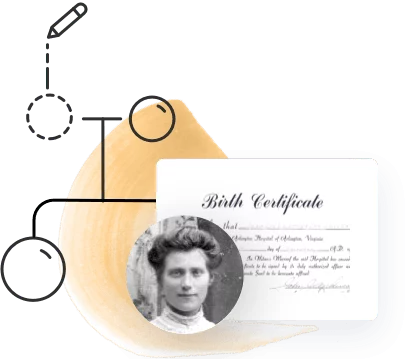
Human beings do make mistakes. Remember the old proverb: “To err is human, to forgive divine”? The genealogy version should be: “To err is human, to correct genealogical.”
Every family historian and genealogist knows that family trees may include errors.
Sometimes they are the result of simple human mistakes. Perhaps the data was misheard during an oral interview, or copied from a transcription or other records inaccurately; maybe tragic events, such as deaths, skewed relatives’ memories and caused them to provide imprecise information; or maybe the handwriting that recorded the information was simply too difficult to read. Sometimes errors are due to information provided by relatives who just did not know the truth (such as gravestone errors) or did not make corrections because doing so would be too expensive (again, gravestone errors). Occasionally, errors can be chalked up to the “let’s make the story sound better” impulse, which may lead to additional embellishment as the years go by.
Here are some tips that can help you avoid repeating and compounding errors in your research.
- If given a choice between using scanned/digitized/microfilmed images of any type of record or a transcription made by another person, choose the image. Human error may creep in every time a record is copied. In addition, transcription also relies on judgment calls made by someone who may not be aware of certain common ethnic names or places or who does not have proper training in deciphering handwriting and recognizing common errors, abbreviations, or symbols. While the transcribers try to be accurate, the information may not be — so look at the image yourself.
- While census records are always useful, remember that the enumerator might not have correctly understood the heavily-accented English of a family member, and this may have led to mistakes in ages, names, and origins.
- Try to follow the family through the subsequent censuses to determine the facts. In the U.S., also try for state censuses (if they exist), social security records, draft cards, alien registration cards, voting records, and citizenship papers.
- Historical newspaper articles can be important, but remember that the reporters might have interviewed individuals who were hazy on details, or might have lacked enough information to conduct a thorough and accurate investigation. This happens even with the best of newspapers. A published obituary may also rely on previously made errors, thus perpetuating the mistakes.
- Family trees published or online are only as good as the person who compiled them. Was the researcher methodical? Did they follow genealogical standards, check original documents (or images), and re-check transcriptions? Or did they merely record the family stories and present them as facts without verification of events, dates, names, etc.? Does the compiler give verifiable sources for data
- In the same way, a published family history (or even a geographic history, such as a city, county, or state) may also contain errors repeated from previous compilations of family trees. Read through online family trees and family histories and look for the documented sources used by the author or compiler. Published histories might also contain printing errors.
- You are fortunate if your ancestors left letters, journals, or even day-by-day diaries. While these are considered a valuable primary source, keep in mind that some of the “facts” about individuals recorded in these sources might be based on hearsay.
- Remember that certain events might not have been recorded accurately, particularly negative events that might have impacted a person’s reputation. On the flip side, stories about people already considered to have negative reputations might be compounded to make their stories even more colorful.
- Genealogy or family history magazine articles have usually been checked and sourced, although a story might rely on an index or human transcription with possible errors.
Many websites now offer scanned images, and these are as good as seeing the original material. One caveat is that certain documents might have notes or comments on the back that may have been overlooked during the scanning process. Always try to use additional documents to confirm data on individuals and families.
If, despite all your best efforts, you cannot confirm information because the sources offer conflicting data, record all those sources, showing the data that appears in each. At least this will confirm for those who view your work — and your future descendants — that you were aware of the conflicting data. In the future, additional records may come to light that will settle the conflict once and for all.
A great tool available to everyone with a MyHeritage family tree is our Consistency Checker. It scans family trees to identify potential errors, conflicts, and inconsistencies. Some are relatively obvious — for example, children listed as having been born before their parents, siblings born four or five months apart, or mothers listed as having children at age 8 or 80. We can all make mistakes, but the Consistency Checker can find these errors for us. It also alerts us to additional discrepancies that, once fixed, can improve the quality and accuracy of our family trees. Read more about this extremely helpful feature at: Online Family Tree Consistency Checker.


